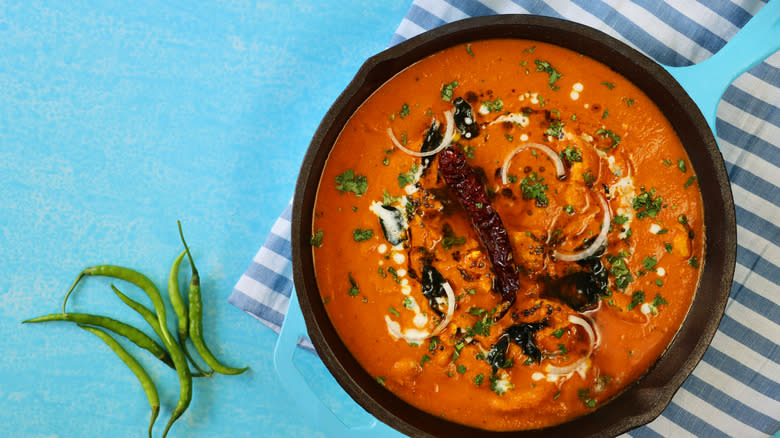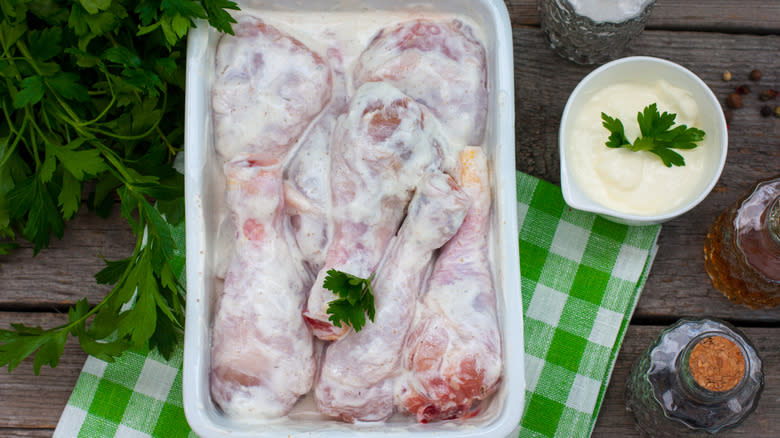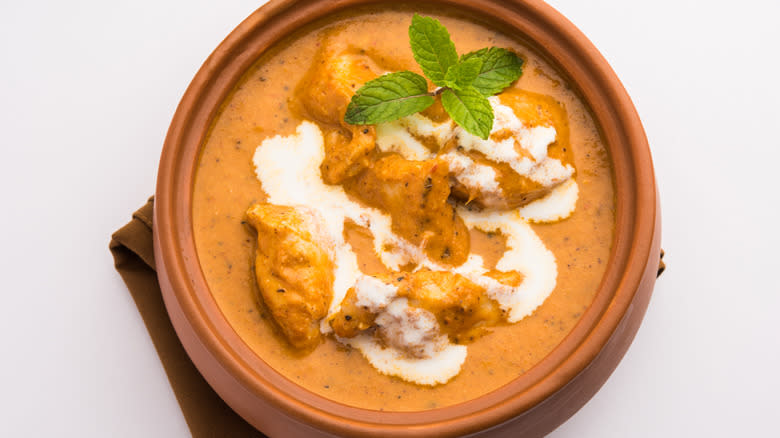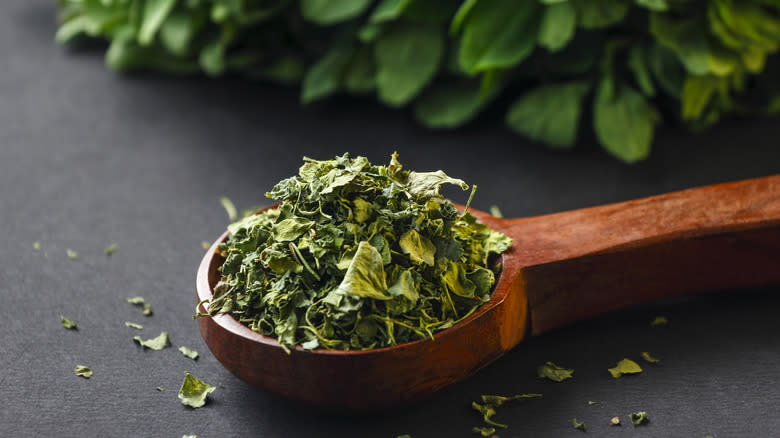15 Tips You Need When Cooking Butter Chicken

Creamy, fragrant, and flavorful — these are just a few words to describe Indian butter chicken, a curry dish originating in Delhi that boasts a sauce made with cooked fresh tomatoes and butter. The dish is also known as "murgh makhani." Butter chicken comes with a debated origin; some stories say it was the result of resourcefulness, and others believe it was an accidentally delicious creation derived from catering to a large party of refugees visiting the restaurant Moti Mahal.
Regardless of how the story goes, an important culinary contribution was made that day within the walls of the Moti Mahal — the birth of butter chicken. There are many ways to make a delicious butter chicken, such as using the right kind of cream to create a silkier sauce or adding fenugreek for a hint of herbal sweetness. Even grilling your chicken before adding it to your curry can give the dish a smokier, aromatic zing.
From small family-run restaurants across the globe to five-star, upscale restaurants, there is a wide variety of ingredients and methods that make the dish pop. Adding these tips to your apron back pocket ensures you always have a wide berth of knowledge with which to make the dish in your own kitchen. Butter chicken is a meal that can taste different each time you make it based on the ingredients you choose–and that is half the fun.
Read more: 12 Popular Grocery Store Butter Brands, Ranked
Marinate Your Chicken Overnight In Yogurt And Spices

While butter chicken can be whipped up in a pinch, this "express" version won't get you the best butter chicken around. To really wow your guests, be sure to have the chicken sit for a yogurt marinade overnight. The secret? Choose full-fat regular yogurt, which is not as thick as Greek yogurt and can work very well for a creamy marinade. This way, your yogurt can really seep into the chicken and tenderize it.
Some recipes will say it's alright to marinade it for 20 minutes at the minimum, allowing your chicken to baste in yogurt slowly and letting the lactic acid and calcium tenderize your meat. That means you'll get a wonderful texture and nix any rubbery chicken in your final dish. You will also want to add spices to your marinade to kick it up a notch (or a few!). Great spices and ingredients to include are ginger, garlic, and garam masala. The ginger adds a warm and spicy flavor, and the garlic adds a savory dimension with a kick.
Garam masala, a key ingredient in butter chicken, is actually a blend of spices — cinnamon, cardamom, clove, cumin, coriander, black pepper, nutmeg, and bay leaves. Together, these spices in garam masala add an incredible depth to your dish. While you'll use this spice again in the actual curry, adding it during the marinating stage packs in double the flavor.
Add Table Cream For A Richer Curry

You'll find that most butter chicken recipes will call for heavy cream; table cream adds a silky texture to your curry. Heavy cream has about 36% of milk fat, while table cream has about 18% to 30%. What results is a lighter, luxurious sauce.
What's so special about table cream is that it's the right milk fat content you want for a sauce-based dish like butter chicken. Too low of fat content (like using whole milk at 3.25% milk fat or half and half 10.5% to 18%), and your cream will break apart when it collides with the acidity in your sauce from the tomatoes. Too thick of a cream, like heavy whipping cream, can weigh down the sauce and make it too rich for some folks.
Table cream, however, boasts the perfect amount of milk fat that is great for use in soups and sauces. One thing to note here – to ensure a silk sauce, be sure to add the cream toward the end of the process once the sauce has cooked and cooled for a while to ensure it blends beautifully and doesn't break apart from too high heat.
Don't Skip On The Fenugreek

Not all recipes will call for fenugreek, but this Mediterranean herb boasts a maple syrup-like flavor that adds beautiful sweetness and dimension to your gravy. It also comes with a slew of health benefits, such as reducing blood pressure, lowering inflammation, and helping to keep blood sugar stable.
What fenugreek achieves best, though, is the ability to balance the flavors of the curry. Due to the fact it has a bitter note, it cuts through the richness of the butter and cream in the dish. Rich curries, gravies, and other sauces are wonderful, but adding too much fat can make them too indulgent and overwhelming. Fenugreek blends well with the acidity of the tomatoes, the sweetness of the butter and cream, and the robust notes from the spice mix used in the gravy. Fenugreek helps create a more harmonious blend of flavors.
Using fenugreek also brings special authenticity to the dish, as many regions throughout India include this herb in their authentic, homemade dishes. If you're looking to stick to a more traditional recipe, fenugreek will take you far.
Read the original article on Tasting Table.

